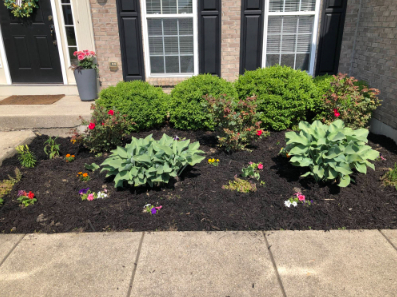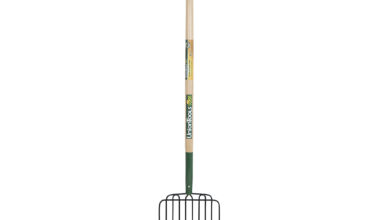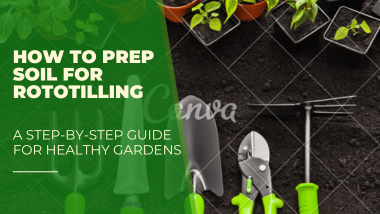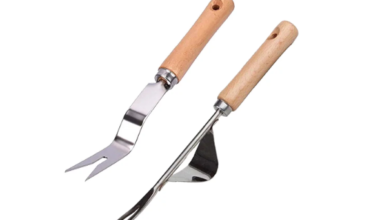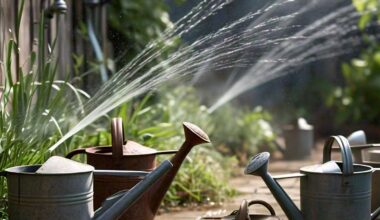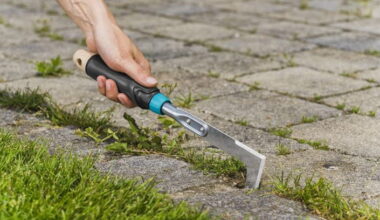Have you ever wondered, “Does landscape fabric kill weeds?” This is a common question among gardeners and landscapers, given its reputation for providing effortless weed control. But does it truly live up to the hype?
Weeds like spurge, crabgrass, and thistles often poke through the fabric, making you doubt its effectiveness over time. Could this popular method be causing more problems than it solves?
In this blog post, we’ll explore the truth about weed control and garden fabric. Get ready to rethink what you thought you knew. We’ll find out what really keeps your garden weed-free.
Understanding Landscape Fabric: Purpose and Types
Landscape fabric is a key tool for keeping weeds away and making gardening easier. It comes in many types to fit various gardening needs.
What is landscape fabric?
Landscape fabric acts as a barrier to stop weeds from growing. It lets water and nutrients through to plants but keeps out the sunlight that weeds need. This fabric is great for garden beds, paths, and under mulch or gravel.
Different types of weed barrier fabrics
There are many kinds of landscape fabric out there:
- Woven fabric: Tough and lasts a long time, great for busy areas
- Non-woven fabric: Soft and bendy, ideal for garden beds with curves
- Spun fabric: A mix of woven and non-woven, offering durability and good airflow
Intended benefits of landscape fabric
Landscape fabric has many perks for gardeners:
- Weed suppression: It stops weeds from getting sunlight
- Soil moisture retention: It keeps soil moist by reducing evaporation
- Erosion control: It holds soil in place, especially on slopes
- Low maintenance: It can cut down on weeding
While it’s great for controlling weeds, remember to think about its effects on soil and plants over time. Installing and caring for it properly will help get the most out of it.
The Short-Term Effectiveness of Landscape Fabric
Landscape fabric is a quick way to stop weeds in gardens. It can keep weeds away for about 3-4 years. It does this by blocking sunlight, so weed seeds can’t grow.
Many gardeners like the short-term benefits of mulch fabric. It cuts down on weeding time and keeps the soil moist. This is great for areas that often get dry, making sure plants get enough water.
But, landscape fabric isn’t a permanent fix. Over time, organic stuff builds up on it. This creates a spot where weeds can sprout. Birds dropping seeds and mulch breaking down also help weeds grow through the fabric.
- Blocks sunlight to prevent weed germination
- Reduces time spent on weeding
- Helps retain soil moisture
- Effectiveness typically lasts 3-4 years
Even though landscape fabric is good for things like holding soil on hills or under hard surfaces, it’s not the best for gardens over time. As it wears off, you might face new weed issues that are tough to control because of the fabric.
Does Landscape Fabric Kill Weeds?
Landscape fabric is often seen as a way to control weeds. But does it really work? Let’s look at its good and bad points.
Initial Weed Suppression
At first, landscape fabric is great at stopping weeds. It acts like a barrier, keeping weed seeds from sprouting. This can keep your garden or paths weed-free for many years.
Long-term Effectiveness
Landscape fabric can last up to ten years, but it’s not perfect. Over time, mulch or soil on top can help weeds grow. Some weeds can even break through the fabric, making it hard to keep your garden neat.
Limitations and Drawbacks
So, does landscape fabric kill weeds forever? No, it doesn’t. Here are some issues:
- Weeds can grow on top of the fabric with organic matter
- The fabric might stop water from reaching plant roots
- Plants covered with fabric may not stay healthy
- Once it’s up, putting the fabric back down is hard
- It can slow down the soil’s natural breakdown
Landscape fabric helps with weeds at first, but it’s not a lasting fix. Think about what you really need from your garden before using this method.
The Impact of Landscape Fabric on Soil Health
Landscape fabric is often used to stop weeds in gardens. But, it can harm soil health in the long run. It might seem like a quick solution, but its effects are worrying.
This fabric stops natural stuff from mixing with the soil. This can make it hard for plants to get air and water. Over time, it traps dirt and gets less able to let water through.
Using fabric to prevent weeds can actually cause problems. When it breaks down, it can trap good creatures like earthworms. This hurts soil health. The fabric can also stop organic matter from breaking down right, making the soil smell bad.
Research shows 43% of landscapers think weed control fabric is more trouble than it’s worth. It makes it hard for plants to grow, moves them around, and can pollute the soil. For better soil and weed control, try these other methods:
- Organic mulching with wood chips or arborist wood chips
- Using newspaper or cardboard as biodegradable barriers
- Practicing no-dig organic gardening methods
- Regular weeding and natural weed control products
Choosing these green options helps keep your soil healthy and controls weeds well in your garden.
Alternative Methods for Effective Weed Control
Looking for eco-friendly ways to fight weeds? Let’s check out some great alternatives to landscape fabric. These methods support sustainable landscaping and keep soil healthy for a long time.
Organic Mulching Techniques
Organic mulching is a top choice for weed control. Use things like pine needles, grass clippings, and leaf mulch to block weeds and feed the soil. Sheet mulching with cardboard and wood chips can keep weeds down for 6 to 12 months, based on how thick and moist it is.
Natural Weed Suppression Strategies
Here are some natural ways to stop weeds:
- Pour boiling water on weeds to kill them and their roots
- Use a vinegar solution (1 gallon white vinegar, 2 cups salt, 1/4 cup dish soap)
- Apply corn gluten meal to stop root growth and add nitrogen to the soil
- Use a flame weeder for instant weed destruction
Sustainable Landscaping Practices
Go for sustainable landscaping by planting groundcovers like creeping Jenny, red creeping thyme, or sedum. These plants cut down on weeding and help absorb rainwater. By making a balanced ecosystem, you’ll naturally stop weeds from growing and support healthy plants. You won’t need artificial barriers.
When to Consider Using Landscape Fabric
Landscape fabric is great for controlling weeds and keeping soil moist. It’s perfect under decks and patios, stopping weeds without harming plants. This fabric helps keep your garden neat and tidy.
It’s also great for new gardens, offering short-term weed control. Hillsides benefit from it too, helping prevent erosion before plants grow. With proper care, it can last for years.
To get the best results, put the fabric on bare soil after clearing it. When planting, make sure to cut holes big enough for the roots. Synthetic fabrics are more durable, lasting about five years before needing replacement.
But remember, it doesn’t work well under organic mulch. Mulch can make new soil layers, letting weeds grow. If you like to change plants often or want a natural look, try mulch or cover crops instead.
- Use under hardscapes
- Short-term weed control in new gardens
- Erosion control on hillsides
- Moisture retention in soil
Keeping up with annual maintenance is key for its effectiveness. Check for any damage, replace torn parts, and stop new weeds. Knowing when and how to use landscape fabric helps you make smart gardening choices.
Conclusion
Landscape fabric can help control weeds at first, but it has its downsides. Over time, it gets clogged with soil, making it less effective. This reduces air and water flow to the soil.
For a better solution, focus on your garden’s health. Organic mulching is a great choice. Using 3 to 6 inches of coarse wood chips stops weeds and keeps the soil healthy. It also lets air and moisture reach the soil better than landscape fabric.
Think about the long-term when picking weed control methods. Sustainable landscaping helps with weeds and supports soil life. Aim for a garden that’s full of life, not just weed-free. Choosing natural methods leads to a healthier, more beautiful garden over time.

